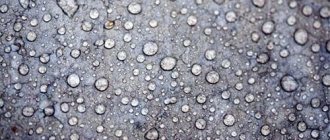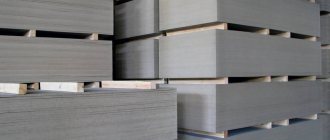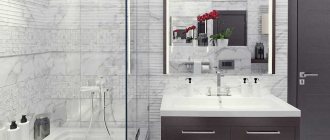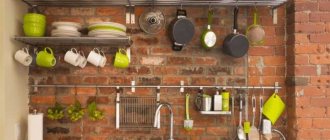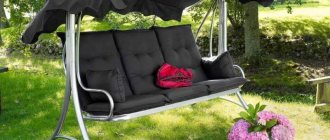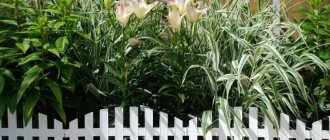In all types of repair and construction work, in the finishing of various premises, in the production of furniture and other structures, various types of self-tapping screws are widely used. The article will tell you how wood screws differ from other types and what sizes they come in.
A self-tapping screw is a universal fastening element in the form of a metal rod with a head and an external thread. When screwed into the materials being fastened, the sharp edge of the threaded spiral independently forms an internal thread in the material, which ensures a reliable connection. There are several types of self-tapping screws, the choice depends on the specific purpose. The main parameters by which this type of fastener is distinguished are manufacturing technology (determines corrosion resistance), pitch of the threaded spiral (different for different materials) and size.
Advantages and disadvantages of wood screws
Self-tapping screws appeared in Russia back in the sixties of the 20th century; the classic bolt was taken as the basis. However, if you look closely, its thread covers the entire surface of the rod, while the self-tapping screw does not. And the material used for the improved fasteners is more durable.
There are types of self-tapping screws that are used when working with materials of different densities, such as metal, plastic, and wood. Sometimes these fasteners are also called “hardware,” short for “metal product.” If we talk about the advantages of such fasteners, they are obvious: High strength and rigidity of the connection. Reusable. Adjustment of the required screw-in depth.
You can do without electricity, because you can screw in a self-tapping screw with a simple Phillips screwdriver. Versatility. There is no need to use additional elements (washers, gaskets). High speed of work completion. The only drawback is considered to be some fragility of the screws (hardened steel becomes brittle over time). The fastener, especially with a phosphated coating, can burst under even slight force. And this cannot be seen from the outside. Unlike self-tapping screws, nails do not have such a hidden defect.
How does a self-tapping screw differ from a screw?
Let's start with definitions. A screw is a fastening element with an external thread applied to a rod. When joining parts, the external thread of the screw is aligned with the internal thread of the hole in the part or parts. So you need to pre-drill a hole to install the screw. A screw differs from a screw in that it has a smooth narrowing at the end and sparser thread turns.
What is the difference between a self-tapping screw and a screw: thread and material
Now pay attention. Self-tapping screw is short for self-tapping screw. It differs in that it does not require a pre-drilled hole for installation. When screwed in, it cuts the required grooves itself. Hence the term - self-tapping. And so that the self-tapping screw can “bite” into the material itself, its thread is triangular, with sharp edges and, as a rule, “deeper”. So, a self-tapping screw is a type of screw that itself drills a hole in the material as it is tightened.
A self-tapping screw is a screw that drills a hole for itself
If we talk about the difference between self-tapping screws and screws, then the self-tapping screw has a more elongated and sharper edge. With this shape it is easier to “bite into” the material. To install self-tapping screws, a screwdriver is usually used, which allows you to do a large amount of work, unlike using a conventional screwdriver. Overcoming the resistance of the material when cutting a hole is not easy.
Classification of wood screws
A great variety of self-tapping screws have been invented: for metal, for wood, for roofing, for working with drywall, gypsum plasterboard, plastic, etc. But even in one subgroup they may differ. For example, there are several types of hardware for working with wood:
- Black oxidized - designed for use in light conditions.
- Yellow and white. They differ from their black counterparts in having more frequent threads, their angle of inclination (45 degrees) and a protective coating that gives them a yellowish or white color. Used for working with hardwood or chipboard.
- Wood grouse self-tapping screws - they are distinguished by more solid dimensions and a turnkey hex head. As a rule, they are used when assembling furniture.
It is believed that the oxidized coating of the black self-tapping screw imposes some restrictions on its use - only in dry places. Yellow and white screws, according to manufacturers, are more attractive in appearance, and the zinc coating provides reliable protection. In fact, black self-tapping screws are more popular among craftsmen. And it’s not just about the price (yellow or white fasteners are 20 percent more expensive).
As practice shows, yellow self-tapping screws are not much longer than black ones in terms of service life. And finer threads do not always provide reliable fixation of workpieces. But if the design of the product is of primary importance, it is better to use yellow or white fasteners - their appearance is more aesthetic.
Selection of screws for metal
There are more types of self-tapping screws for metal, so it’s time to figure it out. They are definitely not made of brass - the metal is too soft. Metal screws are made from carbon and stainless steel. All types of heads are present, almost all splines are also available. There are two types of tips - with a sharp end and a drill. They are also divided by area of application - for indoors and outdoors. They differ in the thickness of the protective layer. For the street, the coating should be thicker. Let's look at the most common types of metal screws.
The most popular types of screws for metal
Self-tapping screws with press washer (seeds)
They differ in their head - it is wide and flat. A roller is formed along its edge, which presses the parts. This type of hardware is used not only for fastening sheet metal and products made from it (for example, assembling a frame for drywall). It can also be used if you need to fasten plastic, plywood or fiberboard to wooden blocks, metal or wooden frames. The flat and wide head presses materials well at the joint.
This is what self-tapping screws with a press washer look like
If you look closely at the fastener head in the photo on the right, you will see that the part has a rounded and almost flat shape. By the way, most of them are in stores and on the market. But this is not the best option for this fastener, although it is cheap. There are very few worthy products of this type. Often the slot is small, untreated metal that breaks or bends. But the most important thing is that even white galvanized screws have a very thin layer of galvanization - 3 microns. It quickly deteriorates and the metal begins to rust.
Self-tapping screws with a press washer are produced in only one diameter - 4.2 mm, but the length can be different
If you look at the more expensive metal screws with a press washer (pictured on the left), they have a trapezoidal head. It is taller, which allows you to make a deeper slot. They are also called “reinforced”. The quality of such fasteners is much higher. A deeper spline ensures better torque transmission. This makes it possible, even without increasing the size of the screw, to tighten the parts more tightly. Due to what? Due to the fact that the reinforced structure can withstand greater torque.
The variety of sizes of screws for metal with a press washer is not encouraging. Usually there is only a diameter of 4.2 mm, and the length can be 13, 16, 19, 25, 32, 38, 41, 50, 57, 75 mm. The weight of the package depends on the number of pieces. It can also be one of the criteria for assessing quality. In any case, the density of the metal and how accurately the dimensions are maintained. Because very often the rod is made not 4.2 mm, but 3.8-4.0 m, also in length. And the thickness of the cap is smaller. In general, pay attention to the weight of the screws.
Self-tapping screws for gypsum plasterboard profiles
These are small black hardware. There is no variety in sizes. There is one diameter - 3.5 mm and two possible lengths - 9.5 and 11 mm. Due to their small size they are called “bugs”. They are made of steel with zinc coating or phosphating. The head is a truncated cone, with a cross-shaped slot. A notch may be applied to the underside of the head. It serves for braking - it begins to cling to the relief on the screw, which turns off the rotation of the screwdriver.
Appearance and drawing
There is a pointed screw and there is one with a screw. Despite their small size, they drill metal up to 0.9 mm thick, and fasteners with a drill - up to 2.0 mm. But this is if they are of normal quality. Please note that this fastener is designed for indoor use. It starts to rust quickly outdoors, so don't use it outside.
Black self-tapping screws for attaching gypsum boards to the frame
The frame for drywall is assembled using “bugs” or self-tapping screws with press washers. The sheets themselves are attached to the frame using black self-tapping screws with a countersunk head and a sharp end. They are made of phosphated steel, and also galvanized. Actually, these are screws for wood or metal. Which ones to take to attach gypsum boards? Depends on what kind of frame was assembled. For wooden bars use wood, for profiles use metal.
This is what the self-tapping screws for attaching drywall sheets to the frame look like
If you are sheathing a regular living space with plasterboard, black phosphated self-tapping screws are a good choice. If the frame is assembled in the bathroom, kitchen, toilet, it is better to take galvanized ones. With high humidity, black ones quickly rust, then the heads fly off.
The most common sizes of self-tapping screws for drywall, which are attached to wooden sheathing
What are the sizes of self-tapping screws for attaching drywall? Optimal diameters are 3.8, 4.0 and 4.2 mm. Length can be 16, 19, 25, 32, 35, 41. 45, 51, 55, 61, 65, 70, etc. up to 100 mm. What length of self-tapping screw is needed to attach a gypsum board sheet to the profile? Use the universal rule: double the length of the attached material. If you are fastening plasterboard with a thickness of 12 mm, then the self-tapping screw is no shorter than 25 mm. Can it be longer? It's possible, but why?
Roofing screws
This is a type of fastener for outdoor use. This means that the protective layer is thicker. Roofing screws are easy to distinguish by their appearance. They have a hex head and a sealing washer. The washer can be rubber or silicone. Silicone is much more durable, but also more expensive. Good rubber, by the way, can also not crack for decades. It’s just difficult to determine whether it’s good or not.
Roofing screws come in different types and are designed for fastening different materials to frames of different rigidities. There are these types of roofing screws:
Types of self-tapping screws for roofing and their area of use
- Pointed. Designed for fastening soft material to wooden sheathing.
- With short screw. This type is for fixing metal sheet material to wood.
- With a long screw. This is for metal-to-metal fixation. Most often used for attaching corrugated sheets to the fence frame.
Roofing screws are made of galvanized steel. And it’s better if galvanizing is done. This coating is more durable. Sometimes paint is also applied over galvanization. Color - matching with coating. The washers are made either galvanized or made of aluminum alloy. The washer was said to have a rubber or silicone seal. Rubber is better than EPDM; it does not lose elasticity for a long time even in the open air. The running dimensions of roofing screws are given in the table.
Application: useful tips
We hope that a small instruction on handling fasteners will be useful to the reader when assembling various wooden structures with his own hands.
- The 35mm wood self-tapping screw is ideal for attaching drywall to wood sheathing. Fastening elements are screwed in in increments of 15 - 20 cm after marking the position of the bars on the surface of the plasterboard; the heads are recessed into the drywall by about a millimeter and, when filling the seams, they are sealed with gypsum putty.
- Black wood screws 35 millimeters long are perfect for covering a wooden frame with plywood or OSB. The holes for them in the sheet material are pre-drilled with a diameter equal to the outer diameter of the fastener thread. Then the holes are countersunk with a drill whose diameter is equal to the size of the head.
- A 51 mm long wood self-tapping screw is suitable for two-layer plasterboard sheathing of a wooden partition frame when attaching the second layer. Double cladding is necessary in small rooms with high traffic.
- Wood screws 75 mm or longer in length cannot be screwed into wooden parts without first drilling holes 1 - 1.5 millimeters smaller in diameter. Otherwise, there is a risk of splitting the wood along the fibers.
- If you need to screw a wood screw 100 mm or longer into dense wood, pre-drilling may not be enough. The screwdriver simply will not be able to turn the hardware on the last turns. A simple trick will help here: drop a little of any oil (for sewing machines, mineral or even waste oil) into a pre-drilled hole.
- Plywood with a thickness of more than 15 mm can be joined end-to-end at right angles, without corners or bars; Moreover, such a connection will be noticeably stronger than using the same furniture corners. In the plane of one of the parts, holes are drilled equal to the diameter of the self-tapping screw; at the end of the second part - with a diameter of 1 - 1.5 mm less.
The size of the hardware depends on the thickness of the parts being connected: for 15 mm, 51 mm fasteners are suitable; A 75 mm long wood screw can be used with 22 mm plywood.
- To seal recessed caps on the front surfaces of parts, you can use acrylic wood putty; however, it is difficult to match it exactly to the wood. Another method is much more practical: mix the sawdust remaining after drilling with a small amount of PVA glue - and you will get a putty that, after the glue sets, will exactly match the color of the material.
Tip 1: Pilot holes
Screws produced for working with wood are designed so that they can be screwed directly into the material, without prior preparation. Most often, this fastener is used in this way, using only a screwdriver or screwdriver when performing work. However, there are cases when the use of self-tapping screws puts the workpiece at risk. When fastening thin wooden parts or elements made of strong but brittle wood, there is always a risk of the material splitting. To avoid damage to the product, it is necessary to prepare a pilot hole before screwing in the screw. This work is performed using a drill and a wood drill bit, the diameter of which is selected depending on the characteristics of the material. If the screw will be screwed into a part made of soft rocks, the diameter of the drill should be 2 times smaller than the diameter of the self-tapping screw. When working with oak and tree species of similar density, use a drill that fully matches the size of the fastener.
State standards for wood screws
According to GOST parameters, wood screws received a certain marking - they correspond to a single standard number 1145. This GOST was adopted back in the 80s of the last century. It hasn't changed since then. In addition to the standard sizes that were mentioned above in the table, the standard determines the material from which the self-tapping screw is made. This steel is of three types: carbon, low-carbon and corrosion-resistant. The standards clearly standardize the fastener manufacturing process down to the size of its head and the applied coating. Thus, you can know exactly which screw is needed for certain purposes and buy it anywhere in our country.
Documents regulating the production of wood screws
The document regulating the production of wood screws is currently GOST 1145-80 (ST SEV 2327-80) “Screws with a countersunk head. Design and dimensions (with Changes No. 1, 2).” This document defines the geometric dimensions and shape of the head, the mass of the products and their quality characteristics, as well as the characteristics of the slot (number, radius, depth). In addition, GOST regulates the marking of self-tapping screws, which greatly simplifies the selection of the required fastening element from the catalog for specific use cases.
Areas of application of self-tapping screws
Fasteners are considered quite common and beneficial in terms of saving time and effort when installing with their help. A standard screwdriver will allow you to quickly secure wooden blocks with self-tapping screws. Hardware is used in almost all industries. Let's consider the main ones:
- Production of special vehicles. For example, the production of agricultural machinery. It is difficult to imagine the agricultural sector without assembling machines and tools, which is impossible without the use of self-tapping screws. To perform a specific task, self-tapping screws of various materials, strengths, and sizes are used.
- Automotive production. Cars, trucks, buses are made with self-tapping screws.
- Construction. Self-tapping screws are used from framing to trimming homes or commercial buildings.
- Floorings. Self-tapping and self-drilling fasteners are relevant for woodworking.
- Roofing, siding. Waterproofing, ventilation holes, tiles, brackets and other elements are secured using self-tapping screws.
- Woodworking. Any craftsman who works with wood has studied the possibilities of using self-tapping screws to fasten parts and implement projects of any complexity. Wood specialists also know how to select the type of tip and the strength of the wood screw for specific types of wood, their hardness and other characteristics
Self-tapping screws can be found commercially to attach metal to wood, plaster to wood, and other combinations of materials found in construction projects and other industries. Woodworking screws are models of fasteners for particle boards, wood of various hardnesses, facade wood and hinges with black phosphate and yellow zinc.
